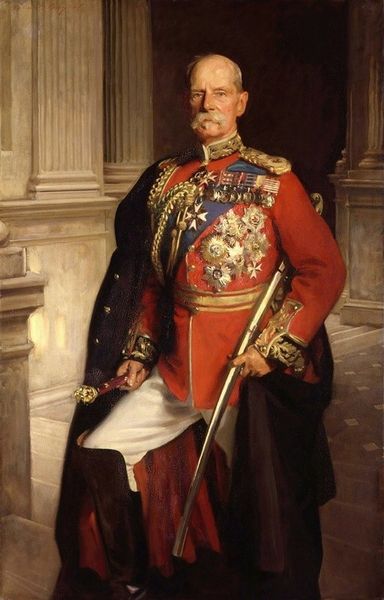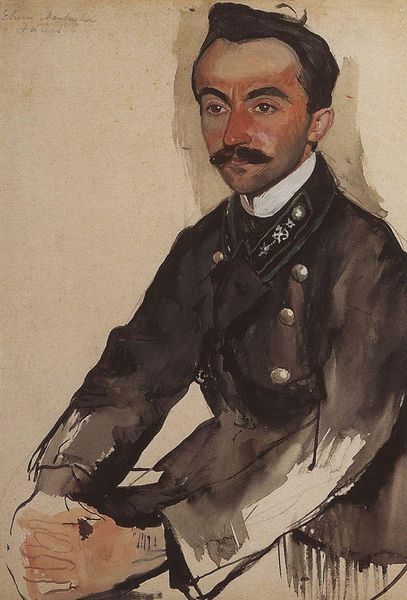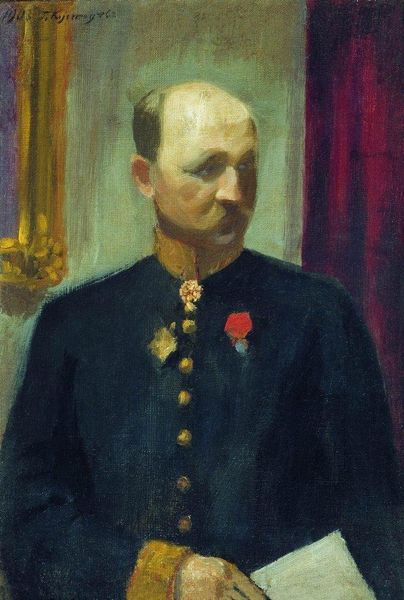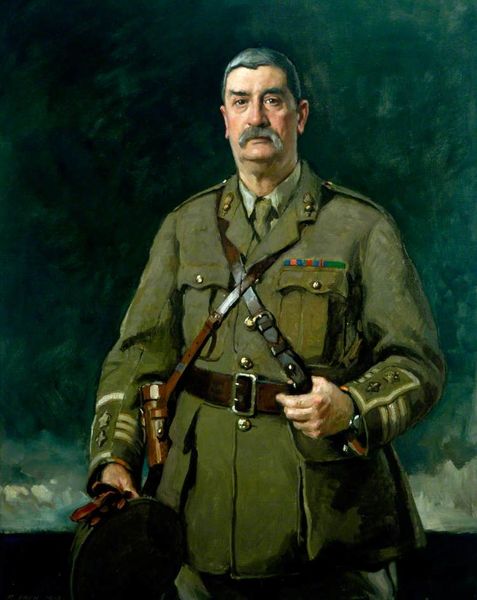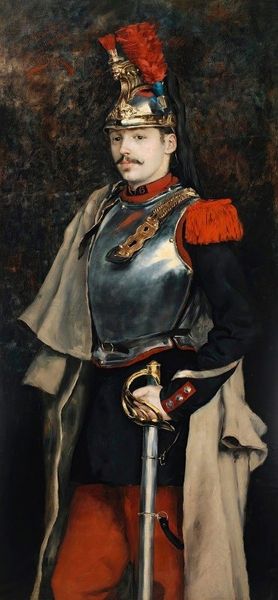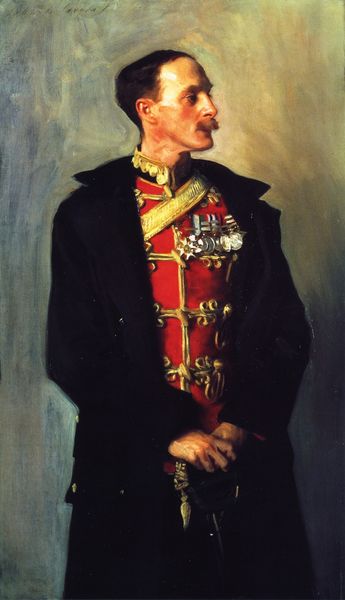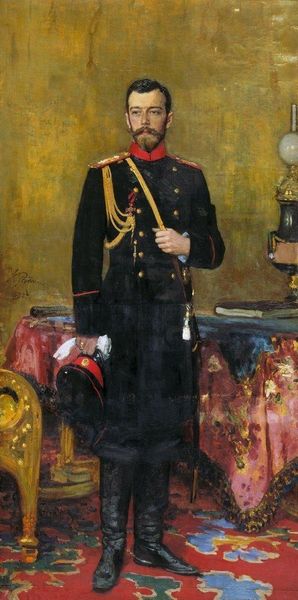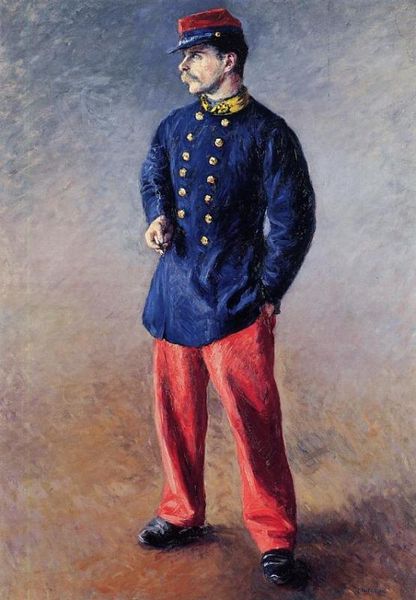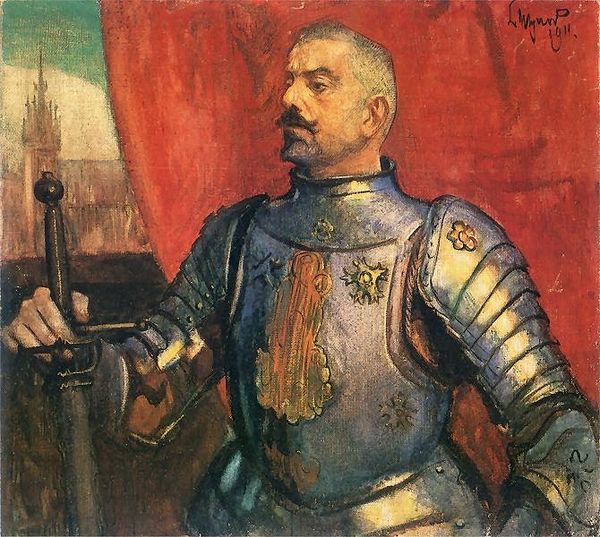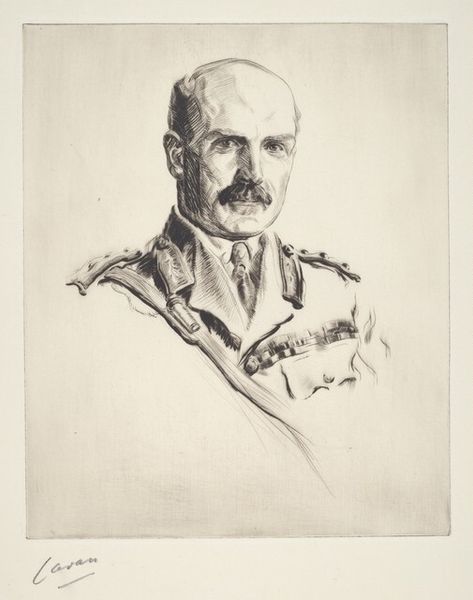
Copyright: Public domain
Editor: This is Frédéric Bazille’s “Portrait of Alphonse Tissie,” painted in 1868 using oil paint. I'm really drawn to how unfinished the background feels compared to the detail in his uniform and face. What strikes you most about this painting? Curator: I immediately see a fascinating representation of labor and status. Consider the labor involved in producing not just the painting, but also the elaborate military uniform. The quality of the materials – the specific pigments used for the red dye, the crafting of the metal helmet – each point to a hierarchical society where visual markers denote specific roles and power. Editor: So, you’re saying the painting itself becomes a sort of commodity reflecting Tissie’s position? Curator: Exactly. Look at the texture and the visible brushstrokes. It's oil paint, a luxury item itself in comparison to other artistic means. How does Bazille treat it? He emphasizes the *process* of applying the paint. The material handling is critical; it reflects his socio-economic background and position relative to his subject. Were the brushstrokes smoother, more blended and polished, what different statement might that make? Editor: I see what you mean! If the painting looked too 'slick,' it would reinforce rather than question those existing power structures. The roughness pushes back. Curator: Precisely. Bazille is consciously choosing to reveal the materiality of the painting process. The almost unfinished state reminds us of its crafted nature. He is perhaps challenging the accepted views of portraiture and status. It also provokes the questions – who pays for art and its materials? For what social purpose? And who is excluded from such patronage? Editor: This makes me appreciate how much more the painting communicates beyond just a simple likeness! It reveals the economics of image-making. Curator: It's all about asking critical questions about what materials were used, who had access to them, and what social meaning we attach to them in different eras. Editor: This materialist perspective gives the portrait so much more depth than I initially recognized.
Comments
No comments
Be the first to comment and join the conversation on the ultimate creative platform.


